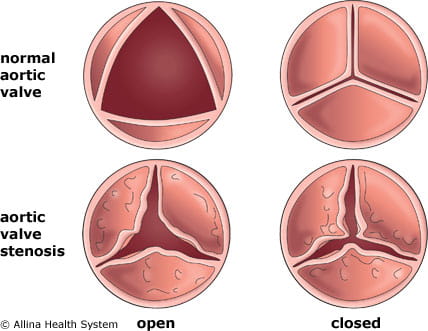
Valve disease
Valve disease occurs if one or more of your heart valves does not open or close properly. Examples are:
- stenosis (the valve opening is too narrow)
- atresia (the valve is not formed so blood cannot flow from one chamber to another)
- regurgitation or incompetence (the valve does not fully close so the blood leaks)
You may have had a valve disease since birth. Atrial septal defect is a hole in the wall that separates the upper chambers of the heart. Ventricular septal defect is a hole in the wall that separates the lower chambers of the heart.
Getting older and having a disease such as rheumatic fever can also damage a heart valve.
Signs and symptoms of valve disease include:
- shortness of breath
- fatigue, tiredness
- chest discomfort
- feeling lightheaded, dizzy or faint
- swelling in your feet, stomach or abdomen
Because your heart valves do not work properly, your heart works harder by thickening the walls (called hypertrophy) or by getting larger (dilating). Over time, the chambers in your heart lose their ability to pump well.

(Top) How a normal valve opens and closes. (Bottom) How a valve looks when it doesn't fully open or close.